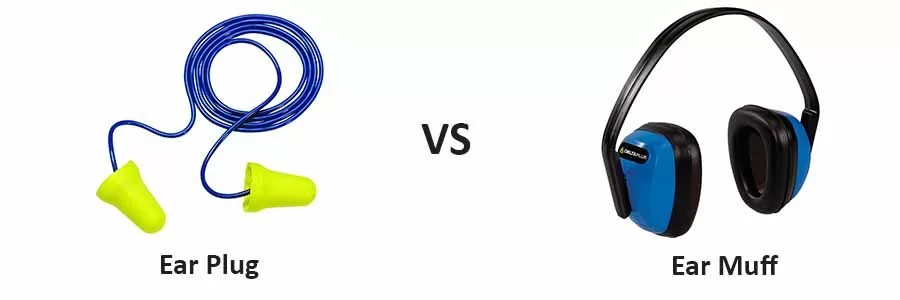Choosing the right ear protection, whether ear plugs or ear muffs, is crucial for safeguarding your hearing in noisy environments. Here are key factors and considerations for each type of hearing protection:

Ear Plugs
Types of Ear Plugs:
- Foam Ear Plugs: Disposable, expand to fit the ear canal, provide good noise reduction.
- Silicone Ear Plugs: Reusable, moldable, comfortable, suitable for moderate noise levels.
- Flanged Ear Plugs: Reusable, have multiple flanges for a better seal, suitable for consistent noise exposure.
- Custom Molded Ear Plugs: Made to fit the exact shape of your ear canal, very comfortable, excellent noise reduction.
Considerations:
- Noise Reduction Rating (NRR): Check the NRR to ensure it meets the noise reduction requirements of your environment. Higher NRR means better noise reduction.
- Comfort: Consider how long you’ll be wearing them. Foam and silicone are generally comfortable for extended use.
- Environment: Think about the nature of the noise and the environment. Custom-molded ear plugs are ideal for environments with consistent, high-level noise.
- Hygiene: Disposable ear plugs are better for environments where hygiene is a concern, while reusable ones need regular cleaning.
- Fit and Seal: Ensure a proper fit to effectively block out noise. Poorly fitted ear plugs won’t provide adequate protection.
Ear Muffs
Types of Ear Muffs:
- Standard Ear Muffs: Cover the entire ear, provide consistent noise reduction.
- Electronic Ear Muffs: Amplify low-level sounds (like conversations) while blocking out harmful noises.
- Helmet-Mounted Ear Muffs: Attach to hard hats or helmets, suitable for construction sites.
Considerations:
- Noise Reduction Rating (NRR): Check the NRR for adequate protection. Higher NRR is better for noisier environments.
- Comfort and Fit: Look for adjustable headbands and cushioned ear cups to ensure a comfortable fit for long periods.
- Weight: Lighter ear muffs are more comfortable for extended use, but they should still provide adequate protection.
- Usage Environment: For construction or industrial sites, helmet-mounted ear muffs might be necessary.
- Electronic Features: If you need to hear conversations or alarms, consider electronic ear muffs with sound amplification and noise-cancelling features.
- Durability: Ensure the ear muffs are sturdy and can withstand the conditions of your work environment.
SINOMOX Tips
Choose Between Earplugs and Earmuffs
| Feature | Earplugs | Earmuffs |
|---|---|---|
| Protection | Better for high-frequency noise | Better for low-frequency noise |
| Comfort | Lightweight, less obtrusive | Bulkier but easier to don/doff |
| Use Case | Confined spaces, sleeping | Industrial settings, ANC capabilities |
| Limitations | Improper insertion reduces efficacy | Less effective with glasses/beards |

